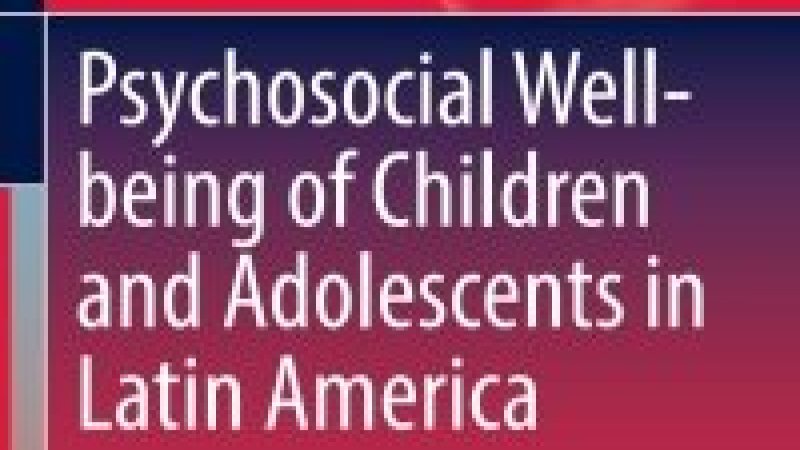
By Dr Denise Oyarzún Gómez, Researcher at the Research and Postgraduate Institute.

The book Psychosocial Well-being of Children and Adolescents in Latin America: Evidence-based Interventions edited by Jorge Castella Sarriera and Livia María Bedin (Universidade Federal do Rio Grande do Sul, Brazil), published by the Children's Well-Being: Indicators and Research Series of Springer Publishing, includes fifteen chapters on child and adolescent well-being in Latin America.
The issue presents a combination of theoretical, and empirical chapters with quantitative and qualitative methodologies and psychosocial intervention. The book stands out for the diversity of contributors from countries such as Chile, Brazil, and Argentina, who have been studying and researching well-being in Latin America for more than a decade.
The first part of the book "Aspects Related to Child Welfare" refers to various areas related to the well-being of children and adolescents, including nine chapters addressing, among others, theoretical and empirical perspectives on multidimensional well-being, spirituality and religiosity, residential care, child abuse, quality of life in the neighbourhood, and adolescent parenthood.
The second part of the book, "Intervention in the Psychosocial Well-being of Children," includes six chapters focused on psychosocial intervention, particularly the promotion and prevention of mental health in children and adolescents in Latin America.
As a whole the book enchants due to its approach to child and adolescent well-being where the key informants are the children and adolescents themselves. They participate directly in surveys, interviews, and workshops, among others. In Latin America, children and adolescents are a vulnerable population not only because of the stage of life they face but also because the geographical context in which they live is characterized by the economic and socio-cultural inequalities typical of the Latin American region.
In summary, this edited book, which includes theoretical, empirical and intervention chapters, is of great interest to readers at the global and local level. It presents an impressive list of Hispanic American authors who in recent years have dedicated themselves to theorizing, researching and intervening in child and adolescent well-being in various Latin American countries. For this reason, the issue becomes a recommended reading for professionals in the social sciences, education and health, as well as for political agents, who seek to promote child and youth well-being from comprehensive perspectives.